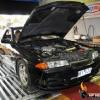Fibreglassing Round Edges.
Announcements
-
Similar Content
-
Latest Posts
-
Do you have a price in mind yet?
-
Yeah. I believe the fear of annealing the alloy and weakening it, Every online discussion has someone saying it's bad and potentially a risk when powder coating forged wheels.
-
I'm interested if anyone agrees with what you've said, and can give a good reason. Temperature of powder coating should be below any temperature you'd use to alter the wheel structure. Powder coat typically 200 to 250. Annealing if that's what people are claiming would be occuring, starts at 300, and depending on the alloy, can need even up at 400+. That's the only part I can think of that could cause an issue that people are believing it's from the rim losing hardness and becoming too soft.
-
Negative probe should be on the cars chassis. Positive on the wire. Start as said above by unplugging everything (unplug the lights, and switches. Now at the switch, there is a wire from the fuse, to the switch, so out your positive on that terminal. It should read open circuit. If it reads something, especially a stupid low value, the short is somewhere between the fuse and the switch. If that's fine, now put the positive probe on the wire that goes to the headlight (at the switch plug). If it reads stupid low, the fault is from the switch, to the headlight. Another quick test, is take the whole LED light setup from the left, and plug it into the right side, does it still blow the fuse? If you put the right hand side led light setup on the left hand side wiring, does the left hand side wiring now blow? If the blowing fuse swaps from right to left doing this, your LED lights are the issue.
-
Anyone know if it's a problem to powder coat forged alloy wheel centers (Rays/Volk GT-C). some say it's bad and can damage the alloy, some say it's not a problem.
-


.thumb.JPG.cf2120a7648a369e8c7c30f420c0479a.JPG)


Recommended Posts
Create an account or sign in to comment
You need to be a member in order to leave a comment
Create an account
Sign up for a new account in our community. It's easy!
Register a new accountSign in
Already have an account? Sign in here.
Sign In Now